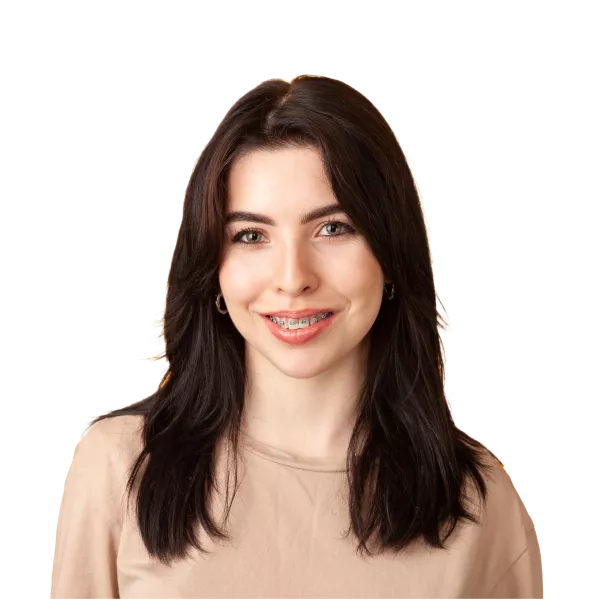
How Do Braces Work?
Braces work by applying continuous pressure over time to gradually move teeth into the desired position. Here’s how it happens:
• Brackets: Small brackets are bonded to the front of each tooth. They act as anchors for the braces.
• Archwire: A thin, metal wire, known as an archwire, is threaded through the brackets. The wire serves as a guide, helping to move the teeth into place.
• Ligatures: Elastic bands, or ligatures, are used to hold the archwire in place within the brackets. They come in various colors, allowing for a bit of personalization.
• Adjustments: Periodic adjustments are made by your orthodontist, replacing the archwire to maintain the right amount of pressure on your teeth, ensuring they move correctly.
• Continuous Pressure: Over time, this pressure causes the teeth to shift in the desired direction. Bone around the teeth reshapes to accommodate their new positions.
This process is gradual, which is why braces need to be worn for a period of time, typically ranging from 18 to 24 months, depending on individual needs.


By age
What to expect when getting braces
Embarking on the journey to braces? Discover what lies ahead! This guide offers insights into the process of achieving a confident smile.

02
Step 02
01
Step 01
03
Step 03
01
Step 01
02
Step 02
03
Step 03
Braces FAQs
It’s recommended to bring your child for an consult with an orthodontist around the age of 7. Early assessment allows the orthodontist to identify potential issues and determine the best time to start treatment.
Yes, some signs include early or late loss of baby teeth, difficulty chewing or biting, mouth breathing, and crowded or misplaced teeth. If you notice any of these, it's a good idea to consult with an orthodontist. .
Candidates for braces or Invisalign include individuals with crowded teeth, gaps, overbites, underbites, or other alignment issues. Your orthodontist will determine the best treatment option based on your specific needs.
The duration of orthodontic treatment varies depending on the complexity of the case. On average, treatment with metal braces can take between 18 to 24 months, but your orthodontist will provide a more accurate timeline during your consultation.
While you may experience some discomfort when the braces are first applied and after adjustments, this is usually temporary. Over-the-counter pain relief can help manage any discomfort, and most patients adjust to their braces within a few days.







